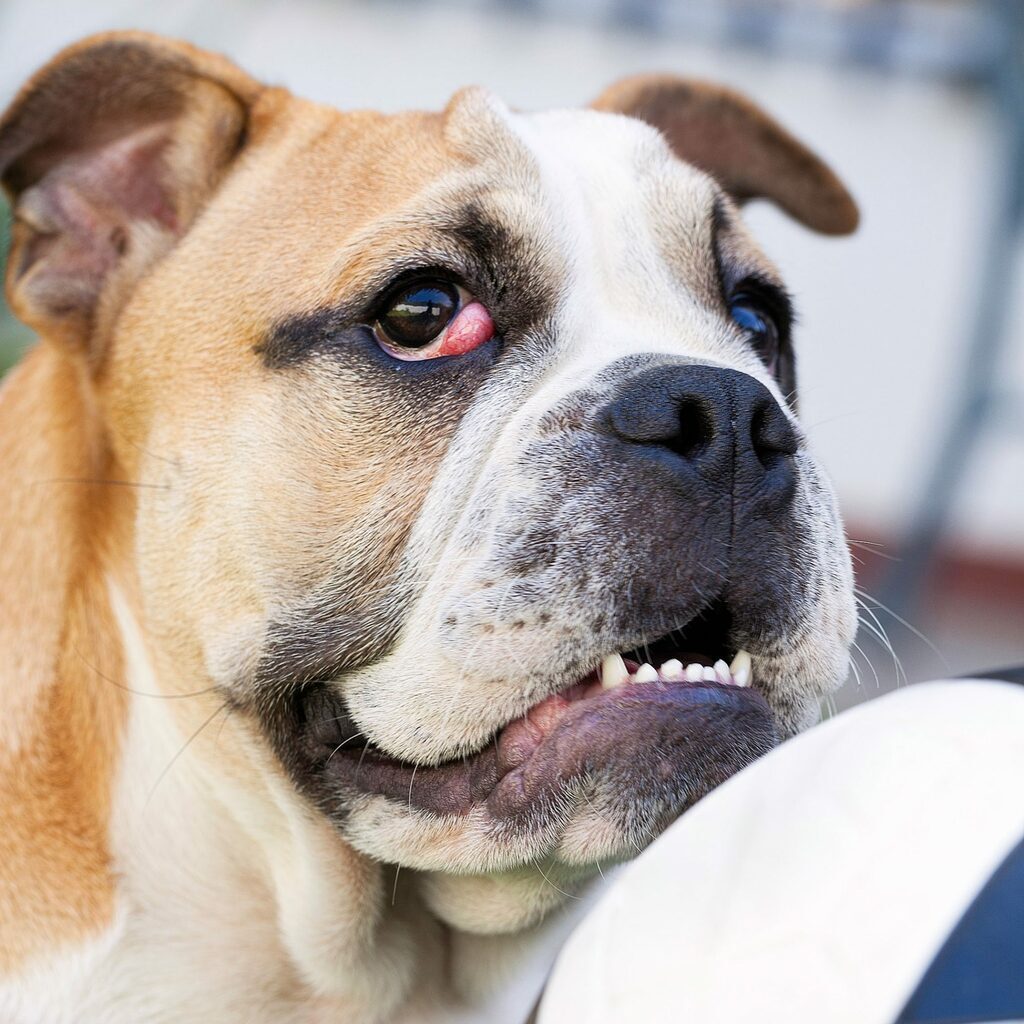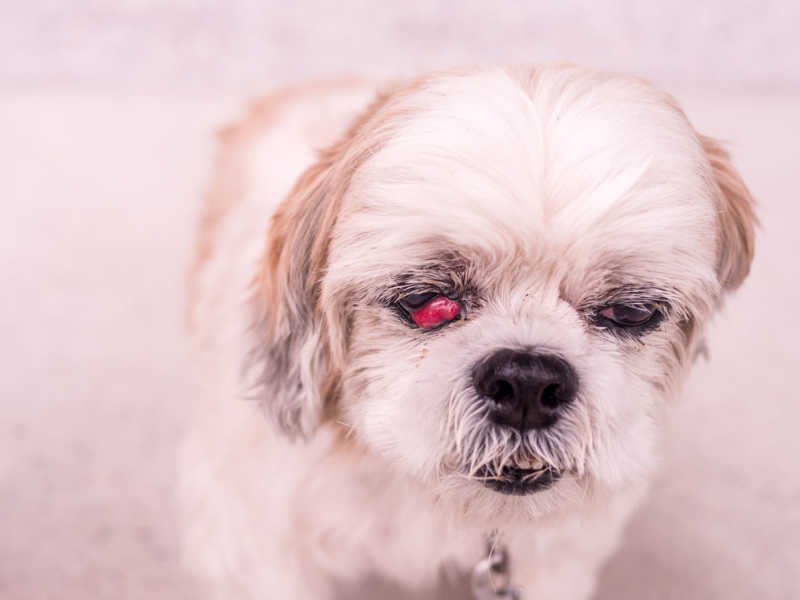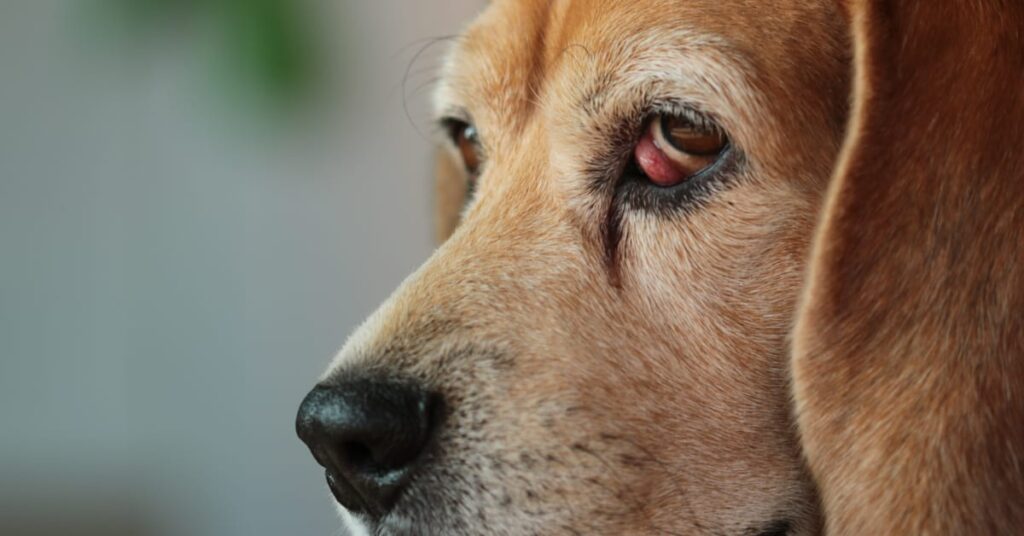
: Did you know that cherry eye in dog is a fairly common condition? This is a condition where one of the dog’s eyes is larger than the other, and it can be caused by a variety of factors. In this article, we’ll provide you with all the information you need to know about cherry eye in dogs, from the symptoms to the treatment. We also have a guide to distinguishing cherry eye from other eye conditions, so you can get the treatment you need without any fuss. So if you’re looking for a comprehensive guide to cherry eye in dogs, look no further!
Cherry Eye in dog is a picturesque term for Everted Third Eyelid. The Third Eyelid is also known as the Nictitating Membrane. It serves as added protection for the eye through an interesting ability to close upward and  over the dog’s eyeball. The canine is able to retract the entire eyeball backward into the eye socket, and coupled with this retraction is the Third Eyelid’s ability to slide up and over the retracted globe.
over the dog’s eyeball. The canine is able to retract the entire eyeball backward into the eye socket, and coupled with this retraction is the Third Eyelid’s ability to slide up and over the retracted globe.
Cherry Eye in Dog

On the underside of the Third Eyelid is a small gland. It secretes about 30 percent of the eye’s tear production. Some surgeons prefer to preserve this gland at the time of surgery to correct Cherry Eye, with the thought in mind that if the other tear producing apparatus ever fail due to infection, trauma, or autoimmune disorders, the gland of the Third Eyelid will be of benefit to the eye.
Once the tear production of an eye fails, a chronic dryness ensues and adversely impacts the health of the eye surfaces. This “dry eye” is called Keratoconjunctivitis sicca (KCS)
Keratoconjunctivitis sicca (KCS) or “dry eye” describes the changes in the eye which result from lack of tear production. To understand “dry eye” it is helpful to know how tears help keep the cornea healthy. The cornea is the optically clear portion of the eye that allows entry of light into the eye. Like all living tissue, the cornea requires a supply of oxygen and energy to remain healthy. Oxygen and nutrients are supplied to most tissues by the blood that moves through the area in blood vessels. The healthy cornea has no blood vessels, if it did it wouldn’t be clear, so the oxygen and nutrients are supplied through the three-layered ‘tear film.’
The images below of CHERRY EYE can be clicked on for a close-up look in a new window.
They are fairly large sized images and will take a moment to display.
SURGERY TO REPAIR AN EVERTED THIRD EYELID

In this case the surgeon has elected to remove the thin strip of cartilage that has weakened and bent backward along with the gland of the Third Eyelid. Generally there is little bleeding and care is taken not to cut through the entire eyelid. It is seldom a good idea to remove the entire Third Eyelid. By removing the weakened and bent strip of cartilage and the gland the eyelid is able to retract into its normal position in the nasal corner of the eye…. allowing less irritation and decreased potential damage to the cornea.
Most veterinarians can perform this simple surgical procedure. It is generally advisable to consider the procedure due to the irritation and potential damage that can result from the dog pawing or scratching at the affected eye. Take a look at what can happen when a dog rubs the cornea and creates a corneal ulcer. For more information about veterinary ophthalmology, a good place top start would be to visit with a Board Certified Specialist in Veterinary Ophthalmology.
Well, that’s all for now. In case you still have any doubt about the symptoms of cherry eye in dogs, just read through this blog again. But if you noticed anything new or heard of a similar case in your neighborhood, then do tell us about it!
At Pet Eye Care Center we use advanced technologies to diagnose and manage cherry eye quickly and efficiently. So what are you waiting for? Call us now!
Frequently Asked Questions
Do cherry eyes in dogs come back?
The gland often resumes its usual function a few weeks after operation. Most of the time, the gland resumes its usual activity a few weeks after surgery. In five to twenty percent of patients, the third eyelid gland may relapse and necessitate further surgery.
Is cherry eye surgery Successful?
The gland should be surgically moved back into its proper position to treat cherry eyes. This technique has a 90% success rate on average. In the remaining 10% of instances, a second surgery may be necessary if the gland relapses.
What is the recovery time for a dog’s cherry eye surgery?
90% of surgeries are successful. The vet can advise treating the unaffected eye prophylactically based on the results of the ocular examination and your pet’s age. An average 2 week recovery period is required after surgery.






